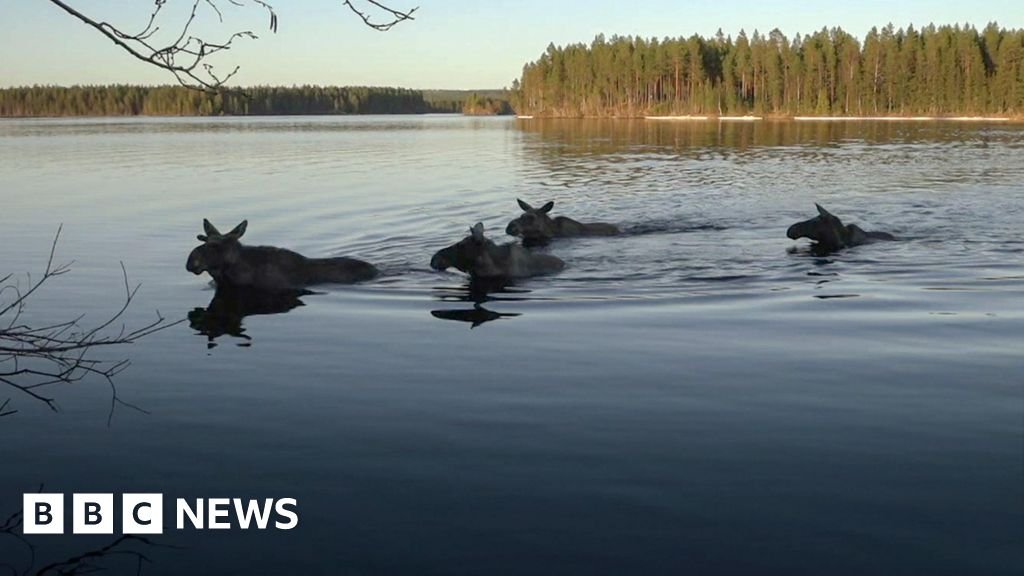Every spring for the past six years, millions of people have tuned in to a round-the-clock livestream of moose on the move in northern Sweden.
“The Great Moose Migration” tracks the animals as they swim across the Angerman River and make their annual journey toward greener, summer pastures.
This year’s 24-hour programme from SVT Play, the streaming platform for Sweden’s national broadcaster, began on Tuesday – a week ahead of schedule because of the warmer weather this April.
The broadcast has become a “slow TV” phenomenon, cultivating a loyal fanbase since its inception in 2019.
Cait Borjesson, 60, who has been hooked to the annual livestream since she stumbled upon it during the Covid-19 pandemic, said her TV had been on for 16 straight hours since it began on Tuesday.
“It’s unbelievably relaxing,” she said. “There’s the natural sounds of the birds, the wind, the trees. It gives you a sense that you’re in nature even if you’re not”.
For Cait, watching the migration has become a yearly tradition, so much so that she books time off work to fully immerse herself in the three-week broadcast.
She said the stream was “like therapy” which had helped her anxiety and panic attacks.
And she is not alone. SVT’s livestream has a wide audience, including a Facebook group boasting more than 77,000 members who come together to share their memorable moments, emotional reactions to the broadcast and their shared fascination of the migration.
A major part of their journey captured by SVT is through the village of Kullberg in northern Sweden, next to the Angerman.
Goran Ericsson, dean of the faculty of forest sciences at the Swedish University of Agricultural Sciences and science advisor for the broadcast, said the moose migrate back to the summer ranges after aggregating in spots with better temperatures in the winter.
“Historically, this migration has been going on since the ice age,” he said. “During spring and summer, moose are more evenly spread out in the landscape.”
He added that around 95% of the moose in northern Sweden migrate annually, adding that early migrations were not new with this year’s prompted by less snow on the ground.
“Early springs happen occasionally,” he said. “We’re still within the normal range of variation.”
More than 30 cameras are used to capture the moose as they move through the vast landscapes, he added.
The show drew in nearly a million people during its launch in 2019, before garnering nine million viewers in 2024.
Minh-Xuan Truong, a researcher at the Swedish University of Agricultural Sciences who has surveyed viewers of the livestream, said in a fast-paced media environment, people enjoy experiencing nature through this “slow TV” style – a genre characterised by long, un-edited and real-time broadcasts.
“A lot of people say it’s like an open window to a forest,” he says. “When you ask them if they would prefer having music in the background, or commentary, they say they prefer just having the sound of the wind, the birds and trees.”
Sweden’s woodlands are home to about 300,000 moose. The animal is known in the Scandinavian country as “King of the Forest”.




